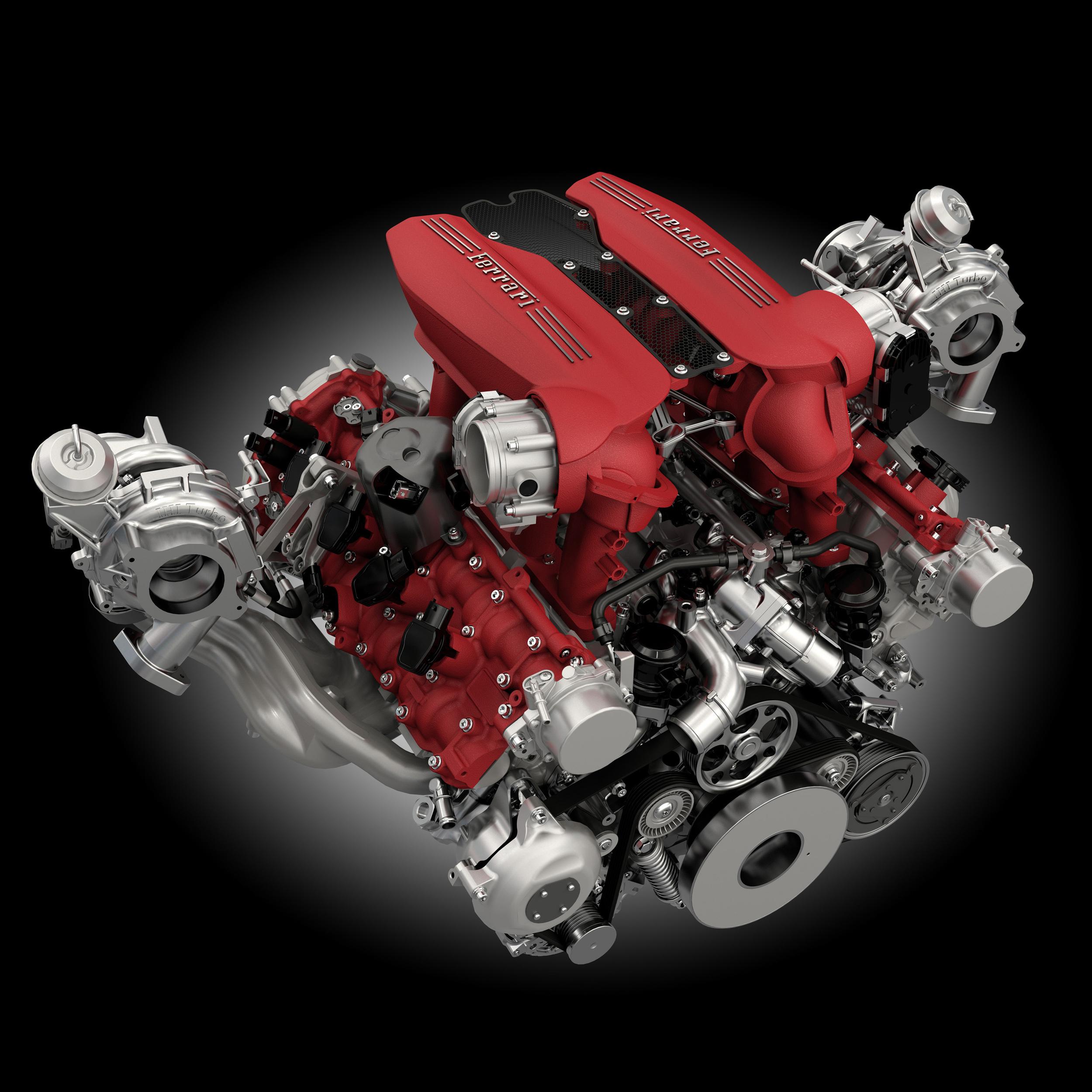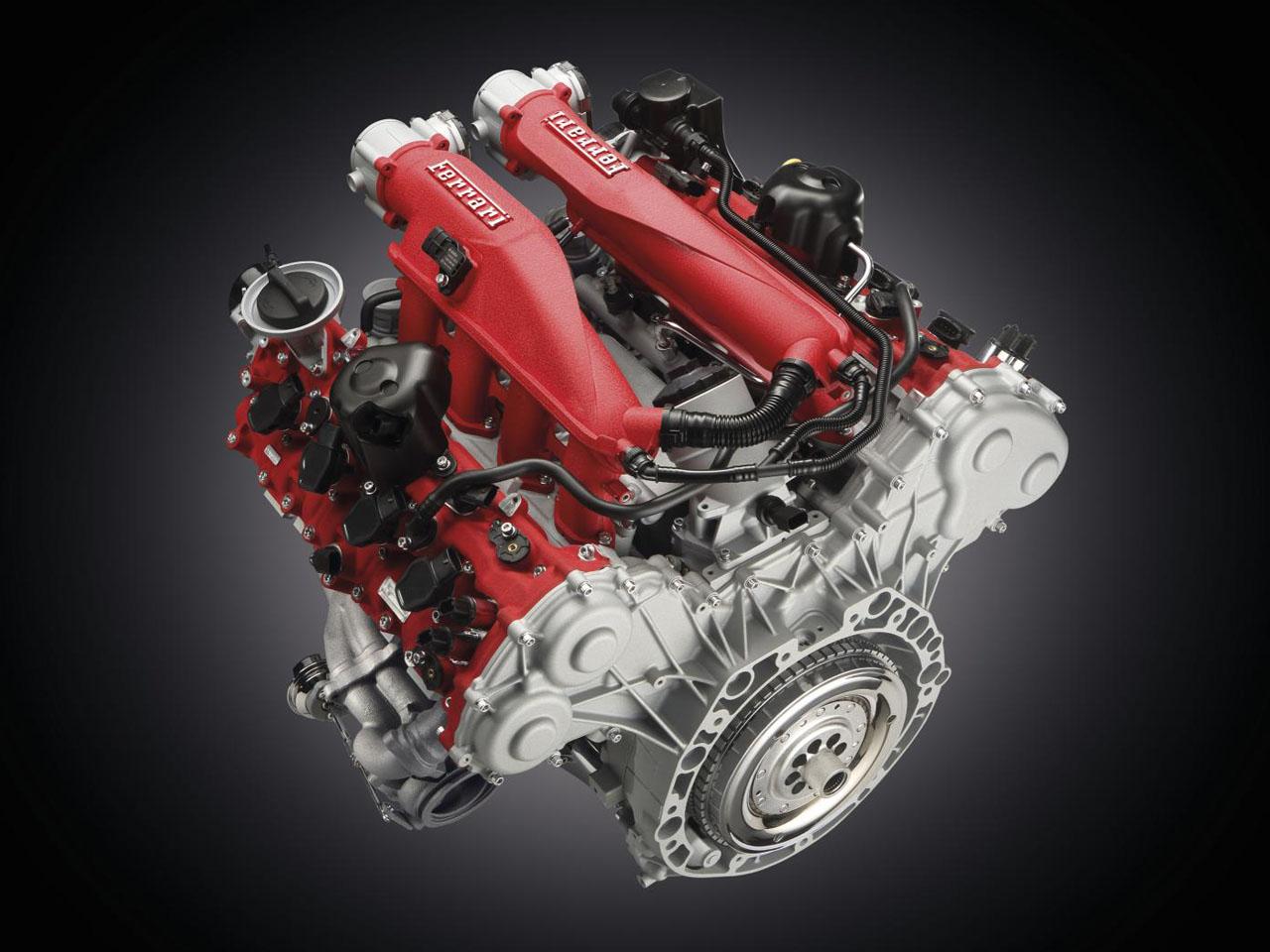Our Exclusive Analysis of the Brand-new Ferrari 488 GTB Engine
Yesterday we covered the news that Ferrari is announcing the new 488 GTB, which is going to replace the current 458 Italia. In that report, you may find the fact that both of the 488 GTB and California T’s engines have the same displacement (3.9L), the same cylinder numbers (V8), and they are both turbocharged. So here comes a question: are these two engines the same? To answer this question, let’s first take a look at the below photos.
Image 1: 3.9L Turbo V8 in the 488 GTB
Image 2: 3.9L Turbo V8 in the California T
Basically speaking, these 2 engines share the same cylinder block, and the valvetrains are propably the same too. The 488 GTB engine has a 500RPM higher redline, which partially contributes to the higher output. Besides this, there are also some intersting aspects that worth mentioning:
1. The California T engine has smaller Helmholtz pressure stabilizing chambers (the two red chambers on top of the cylinder head), while the stabilizing chamber on the 488 GTB engine is much larger.
2. The two Helmholtz chambers on the California T engine, are connected by a fixed tube. This means it is NOT a variable system; on the contrary, the stabilizing chamber in the 488 GTB engine is a variable resonance type (the connecting tube has a electronically-controlled valve).
3. To utilize the benefit from the larger Helmholtz chamber, the slide tubes (those vertical pipes that connect the stabilizing chamber to the cylinder head) on the 488 GTB engine are longer with larger diameter. The reason why 488 GTB can use a longer slide tube is because the engine is placed behind the passenger cabin, which has more room to fit. The California T places its engine in front of the cabin, so the height of the engine is limited to clear the engine hood cover.
4. The turbocharger in California T is at traditional position, which is tucked underside the V banks, and close to the exhaust manifolds. The advantages are its compactness, which saves spaces (since the engine need to share spaces with the front suspension, steering, braking systems); and it also reduces heat loss, which benefits emission control during cold startup. On the other hand, the 488 GTB engine places the turbochargers more outwards and sits higher than the cylinder head. This leads to a longer and more straight exhaust manifold, which is a typical example of optimizing high RPM exhaust air stream resonance. Such design also indicates: the 488 GTB turbocharger is more relying on the exhaust airflow’s kinetic energy, not just the pressure. The high position of the turbocharger also makes a very short intake path possible, which greatly reduces turbo lag and enhances throttle response.
5. Placing the engine behind the cabin can not only optimize 488 GTB’s front/rear weight distribution, but also allows more optimized engine packaging and design flexibility.
6. Thanks to advanced light-weight materials in the engine block construction, the 488 GTB has very hight HP output/powertrain weight ratio, which any current pure EV cannot match. Take the Tesla Model S P85 as example (it is not a sports car but we can use this to illustrate the weight of a EV powertrain with similar output and range), the battery pack alone has already taken up 1,323 lbs, putting the electric motor, differential together makes the total powertrain weight close to 1,900lbs, more than 2 times of the weight of a gasoline counterpart with similar output.
Side Note: nowadays the best sports car should be using a hybrid powertrain, which gets good stuffs from both sides. This is a future trend within the sports car industry, which is already represented by the Porsche 918, the upcoming Acura NSX and also Ferrari’s LaFerrari. For luxury sedans, a famous professional race car driver (we hide his name for privacy) we have interviewed told us his opinion: the Porsche Panamera S E-Hybrid, which has identical HP output (416hp) to the Tesla Model S P85, is “light year ahead” than the Model S in terms of the performance, ride quality and handling, and it still “has a very long way to go before joining the first-class club”. Not to mention the fact that the Model S, even could not complete a full lap on the Nürburgring with full power (due to battery pack overheating issue).
Conclusion: the 488 GTB engine inherits Ferrari’s design tradition (seperated stabilizing chambers with connecting pipe), optimized for high RPM performance, with hight output/weight ratio.





Recent Comments